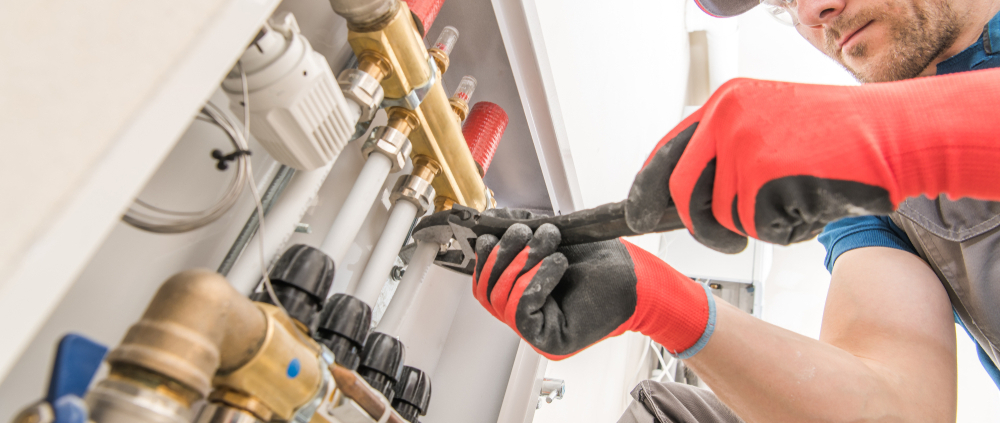5 Best Residential Plumbing Preventative Maintenance Strategies
It’s a new year and even though we’ve done our best to flush away 2020, there’s still a long list of residential plumbing problems we need to address. Before we jump into these issues and the best way to combat them, we first need to take a step back and look at residential plumbing as a whole.
Consider everything in your house or apartment that uses water. Toilets, sinks, laundry, water heaters, refrigerators and even garbage disposals are just a few of the everyday applications that function with plumbing. It might seem like a lot, but the good news is that all of these and others residential plumbing fixtures can easily be maintained with a proper preventative maintenance strategy in place. Here’s a look at five residential plumbing preventive maintenance strategies that you should make a point of emphasis to ring in the new year.
Residential Plumbing: Fix up Those Leaky Faucets
It’s no secret that a leaky faucet or showerhead can waste an enormous amount of water and send your water bill skyrocketing. On the surface a small leak or drip is easy to overlook, but if you don’t address the problem at hand it can get worse at a moment’s notice and cause serious water damage. A dripping faucet can lead to an estimated 3,000-gallons of wasted water each year.
For this type of residential plumbing problem, the best way to combat it is by routinely checking your faucets for leaks or any signs of damage. Be sure to double-check the handles as well for any water runoff, along with underneath the sink itself for any water stain marks or potential drips when the faucet is running.
Toilet Troubles
One of the most common residential plumbing problems is a toilet running when it’s not supposed to. More often than not this is caused by a faulty seal around the valve seat. Like every product there is standard wear and tear that happens, and toilets are no different, as gunk can build up around the valve seat and flapper, preventing the flapper to seal properly which in turn leads to running water. A toilet that continues to run can waste up to an estimated 26-gallons per day!
Occasionally there might be an issue with the handle or even the tank stopper itself. The best strategy is stay on top of these repairs before they escalate out of your control. These common residential plumbing problems can often be fixed with a little inexpensive and quick maintenance.
Understanding Water Pressure
Water pressure is determined by how much force the water comes out of your sinks or shower heads – pretty straightforward. However, you want to make sure that the pressure and force of that water coming out is at a safe level. A pressure gauge is a great way to test the water pressure of your faucets and showers to ensure there aren’t any issues to worry about. Another great tip for keeping your water pressure at a safe level is to add a pressure regulator should you notice anything suspicious when you turn on a sink or shower. Water pressure is measured in psi, or pounds per square inch, and represents the force at which water enters your home from the water main. Normal psi for a home pipe system is between 30 and 80 psi. While you don’t want the psi to be too low, it violates code to be above 80.
Careful What You Flush
Just because we’re flushing away 2020 doesn’t mean we can just stick anything down our toilets. This is a very common residential plumbing problem as more often than not things that are not supposed to be flushed down the toilet somehow end up down those pipes. The easiest way to prevent this is to be extra careful what you put down your toilet, but anyone with young children knows that’s easier said than done.
A good rule of thumb is to keep what you flush to a bare minimum. Only toilet paper and human waste should be going down those pipes and it’s best to avoid pouring any chemicals down the drain that could be considered reactive.
Regular Inspections
Keeping a close eye on all your residential plumbing fixtures should be a no-brainer, as staying alert for signs of damage can save you a small fortune later on. For homeowners with a septic tank, inspection should be a regular occurrence. Septic tanks play a significant role in residential plumbing so it’s vital to make sure that tank is running at 100%. Pumping your septic tank is a very important step in preventive maintenance and one that should not be overlooked.
2021: The Year of Preventative Residential Plumbing Maintenance
Preventive maintenance might sound like a chore, but it’s a key component in avoiding major plumbing problems down the road. If you catch a problem early on there’s a good chance you can fix the issue at hand without having to spend an arm and a leg. Here at Hulsey (a Blue Flow Company) the last thing we want you to do is flush your money down the drain, which is why our dedicated team of professionals can help with whatever residential plumbing issue you might have.
Contact us today to learn about preventive maintenance and how to best prepare for those plumbing problems!




Leave a Reply
Want to join the discussion?Feel free to contribute!